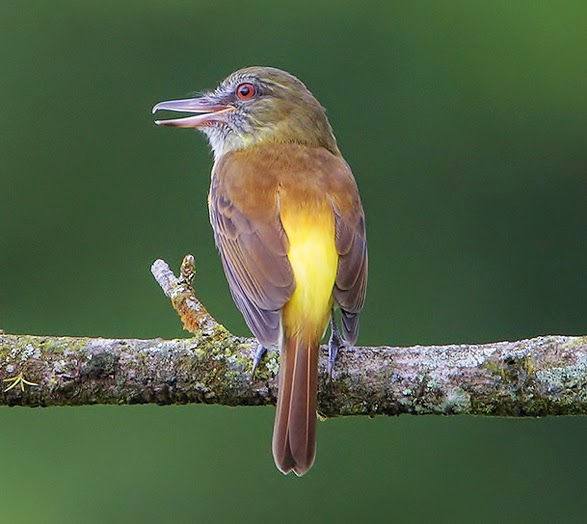 |
| Photo by Greg Lavaty (Osa Recording Project) |
Common name:
bright-rumped attila (en); capitão-de-saíra-amarelo (pt); atila polimorfo (es); gelbbürzel-attilatyrann (de)
Taxonomy:
Order Passeriformes
Family Tyrannidae
Range:
This species is found from western and southern Mexico south to Bolivia and north-western Brazil. There is also a disjunct population in coastal south-eastern Brazil, from Pernambuco to Rio de Janeiro.
Size:
These birds are 18-19 cm long and weigh 40 g.
Habitat:
The bright-rumped attila is mostly found in moist tropical forests, but also in dry tropical forests, savannas, second growths, banana and cacao plantations and rural gardens. They tend to favour forests edges and gallery forests and occur from sea level up to an altitude of 2.100 m.
Diet:
They hunt insects and spiders, also taking frogs, lizards, berries and seeds.
Breeding:
These birds breed in March-July. The nest is a bulky cup made of fibrous rootlets, rachises of compound leaves, and pieces of green fern frond or moss. It is lined with finer materials and placed among epiphytes, between buttresses or on a river or road bank, usually 0,8-3 m above the ground. The female lays 3-4 whitish, pinkish or yellowish eggs with brown to lilac spots and speckles, which she incubates alone for 14-15 days. the chicks fledge 17 days after hatching.
Conservation:
IUCN status – LC (Least Concern)
This species has a very large breeding range and a global population estimated at 0,5-5 million individuals. The bright-rumped attila is suspected to loose 12,5-13,5% of suitable habitat within its range over the next decade, based on a model of Amazonian deforestation. Therefore, it is suspected to undergo a small decline in the near future.







